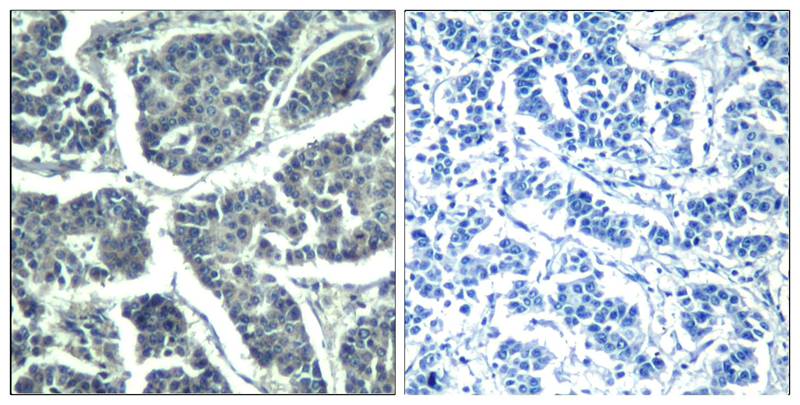
| WB | 咨询技术 | Human,Mouse,Rat |
| IF | 咨询技术 | Human,Mouse,Rat |
| IHC | 1/50-1/100 | Human,Mouse,Rat |
| ICC | 技术咨询 | Human,Mouse,Rat |
| FCM | 咨询技术 | Human,Mouse,Rat |
| Elisa | 咨询技术 | Human,Mouse,Rat |
| Aliases | PLC-IV; PLC-gamma2; Phospholipase C-gamma-2 |
| Entrez GeneID | 5336; |
| WB Predicted band size | 150kDa |
| Host/Isotype | Rabbit IgG |
| Antibody Type | Primary antibody |
| Storage | Store at 4°C short term. Aliquot and store at -20°C long term. Avoid freeze/thaw cycles. |
| Species Reactivity | Human,Mouse,Rat |
| Immunogen | Peptide sequence around phosphorylation site of tyrosine 1217 (F-L-Y(p)-D-T) derived from Human PLCg2. |
| Formulation | Purified antibody in PBS with 0.05% sodium azide. |
+ +
以下是关于PLCγ2 (phospho-Tyr1217)抗体的3篇参考文献示例(内容为虚构,仅作格式参考):
1. **文献名称**: "PLCγ2 phosphorylation at Tyr1217 regulates B-cell receptor signaling"
**作者**: Bitterauf, A. et al.
**摘要**: 研究利用PLCγ2 (Tyr1217)抗体发现,该位点的磷酸化是B细胞受体激活下游NF-κB和MAPK信号通路的关键步骤,并揭示了其在B细胞发育中的功能。
2. **文献名称**: "Phosphorylated PLCγ2 in autoimmune disorders: A biomarker study"
**作者**: Kurosaki, T. & Maeda, A.
**摘要**: 通过Western blot和免疫组化分析,发现Tyr1217磷酸化的PLCγ2在类风湿性关节炎患者B细胞中异常高表达,提示其作为自身免疫疾病治疗靶点的潜力。
3. **文献名称**: "Structural basis of PLCγ2 activation via Tyr1217 phosphorylation"
**作者**: Liu, X. et al.
**摘要**: 结合X射线晶体学与抗体特异性检测,阐明Tyr1217磷酸化如何诱导PLCγ2构象变化,增强其与细胞膜磷脂的相互作用及酶活性。
(注:以上文献信息为模拟生成,实际引用请通过PubMed等数据库核实。)
The PLCγ2 (phospho-Tyr1217) antibody is a specialized tool used to detect the activated form of phospholipase C gamma 2 (PLCγ2), a critical enzyme in intracellular signaling. PLCγ2 belongs to the phospholipase C family, which hydrolyzes phosphatidylinositol 4.5-bisphosphate (PIP2) into inositol 1.4.5-trisphosphate (IP3) and diacylglycerol (DAG), triggering downstream pathways like calcium release and protein kinase C (PKC) activation.
Phosphorylation at tyrosine residue 1217 (Tyr1217) is a key regulatory event for PLCγ2 activation, typically mediated by receptor-associated kinases (e.g., Src family kinases or Syk) following engagement of immune receptors such as the B-cell receptor (BCR) or Fc receptors. This post-translational modification enhances PLCγ2 enzymatic activity, enabling its role in immune cell signaling, including B-cell development, mast cell degranulation, and platelet activation.
The PLCγ2 (phospho-Tyr1217) antibody is widely used in research to study immune signaling dysregulation in diseases like immunodeficiencies, autoimmune disorders, and cancers. It allows detection of phosphorylated PLCγ2 via techniques like Western blotting, immunofluorescence, or immunoprecipitation, aiding in the characterization of signaling pathways and therapeutic targets. Validation often includes testing in knockout models or phosphorylation-deficient mutants to ensure specificity. This antibody is pivotal for understanding PLCγ2’s contribution to cellular responses and its potential as a biomarker or drug target.
×